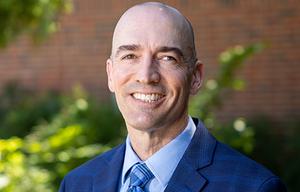
Education
Ray Carter | April 23, 2025
Urban Institute study shows school choice benefits low-income children
Ray Carter
With the Oklahoma Parental Choice Tax Credit program now entering its second year of existence, providing all children in Oklahoma an avenue to a private-school education, it is still too early to determine to what degree the program is changing the academic trajectory of children’s lives.
But a new study examining the results of a long-established school choice program in Ohio shows that low-income children are likely to realize significant academic benefits as a result of Oklahoma’s program.
Released by the Urban Institute, a center-left think tank, “The Effects of Ohio’s EdChoice Voucher Program on College Enrollment and Graduation” examined Ohio’s Educational Choice Scholarship Program (EdChoice), which was enacted 20 years ago, analyzing the program’s long-term impacts on students’ enrollment in and graduation from college.
“Our findings indicate that Ohio’s school voucher program had large and lasting positive effects on the primarily low-income students who used EdChoice scholarships to attend private school, with especially large impacts for students who remained in the program for several years,” wrote researchers Matthew M. Chingos of the Urban Institute, David N. Figlio of the University of Rochester, and Krzysztof Karbownik of Emory University.
Ohio enacted what is now the Educational Choice Scholarship Program (EdChoice) in 2005, with students first using scholarships from this program to attend private schools in the 2006–07 school year. Initially, eligibility was limited to students who previously attended public schools that received the lowest rating under the state’s accountability system three years in a row. But the program was expanded over time.
“We also find evidence that allowing students to use public funding to attend private schools did not harm outcomes for public school students in Ohio.”
By 2013–14, the Ohio program began providing scholarships to economically disadvantaged students regardless of their public school’s accountability rating, gradually expanding one grade per year from kindergarten students in 2013–14 to all low-income K–12 students in 2020–21.
Since 2023–24, all students have been eligible for EdChoice Expansion regardless of income.
The Urban Institute study does not cover students receiving scholarships through the most recent universal phase of the program and instead focuses on students who participated in the EdChoice program between 2007–08 and 2013–14. During that period, students received vouchers worth up to $4,250 for grades K–8 and $5,000 for high school, the equivalent of roughly $5,800 and $6,800 in 2025 dollars.
Researchers reviewed the outcomes for 6,243 EdChoice participants who were enrolled between 2007–08 and 2013–14. A subset of 1,650 students were old enough to be observed for at least six years following high school graduation.
EdChoice participants’ results were matched to nonparticipants with similar prior test scores and demographics who remained in public schools during the same period.
“We find that students who used an EdChoice scholarship to attend private school were substantially more likely to enroll in and graduate from college than similar students who remained in public schools,” the report stated.
While 48 percent of similar public-school students went on to college, that was well below the 64 percent rate for demographically similar students who attended private K-12 schools thanks to Ohio’s EdChoice program.
And when they went to college, Ohio EdChoice’s beneficiaries were also more likely to graduate from college than their peers who emerged from public schools. EdChoice students were also much more likely to enroll in four-year and selective colleges than their public-school peers.
“We find that students who used an EdChoice scholarship to attend private school were substantially more likely to enroll in and graduate from college than similar students who remained in public schools.”
The benefits were often greatest for students from the most challenging backgrounds.
“Estimated enrollment impacts are strongest for male students, Black students, students with below-median test scores before leaving public school, and students who spent the most time in poverty during their childhood,” the report stated.
A common objection raised by opponents of school-voucher programs is that they indirectly harm public schools since money follows a student to a private school, meaning the public school has less funding in theory, even as it also has a reduced workload.
But when the Urban Institute researchers examined Ohio’s outcomes, they found no evidence to bolster that anti-school-choice talking point.
“We also find evidence that allowing students to use public funding to attend private schools did not harm outcomes for public school students in Ohio,” the report stated.
The demographics of many students who benefited from the Ohio school-choice program are similar to the backgrounds of many Oklahoma students who are now accessing private school thanks to this state’s Oklahoma Parental Choice Tax Credit program.
The Oklahoma Parental Choice Tax Credit program provides refundable tax credits of $5,000 to $7,500 per child to cover the cost of private school tuition, with the largest credits going to those with the lowest income.
The program has five income brackets: Families earning up to $75,000 can receive a $7,500 per-child refundable tax credit; those earning $75,001 to $150,000 get a credit of $7,000 per child; families with income between $150,001 to $225,000 qualify for a $6,500 credit; those earning $225,001 to $250,000 receive a $6,000 credit; and those earning $250,001 and up qualify for a credit of $5,000 per child.
Preference is given to families in the two lowest income brackets.
A report released by the Oklahoma Tax Commission showed that, in its first year, the Oklahoma Parental Choice Tax Credit program benefited far more children from the lowest income category than children whose families were in the highest income bracket.
The number of children served by the program from families with incomes below $75,000 was 35 percent greater than the number of beneficiaries from families earning $250,000 or more.
Overall, 60 percent of children were from families in the two lowest-income brackets (those with incomes below $150,000), and nearly 80 percent came from families outside the top bracket of $250,000 or more.
Parents recently rallied at the Oklahoma Capitol to thank policymakers for supporting the program, with several speakers noting that the Oklahoma Parental Choice Tax Credit program had made private school financially viable for their children.
Photo Credit: Urban Institute

Ray Carter
Director, Center for Independent Journalism
Ray Carter is the director of OCPA’s Center for Independent Journalism. He has two decades of experience in journalism and communications. He previously served as senior Capitol reporter for The Journal Record, media director for the Oklahoma House of Representatives, and chief editorial writer at The Oklahoman. As a reporter for The Journal Record, Carter received 12 Carl Rogan Awards in four years—including awards for investigative reporting, general news reporting, feature writing, spot news reporting, business reporting, and sports reporting. While at The Oklahoman, he was the recipient of several awards, including first place in the editorial writing category of the Associated Press/Oklahoma News Executives Carl Rogan Memorial News Excellence Competition for an editorial on the history of racism in the Oklahoma legislature.